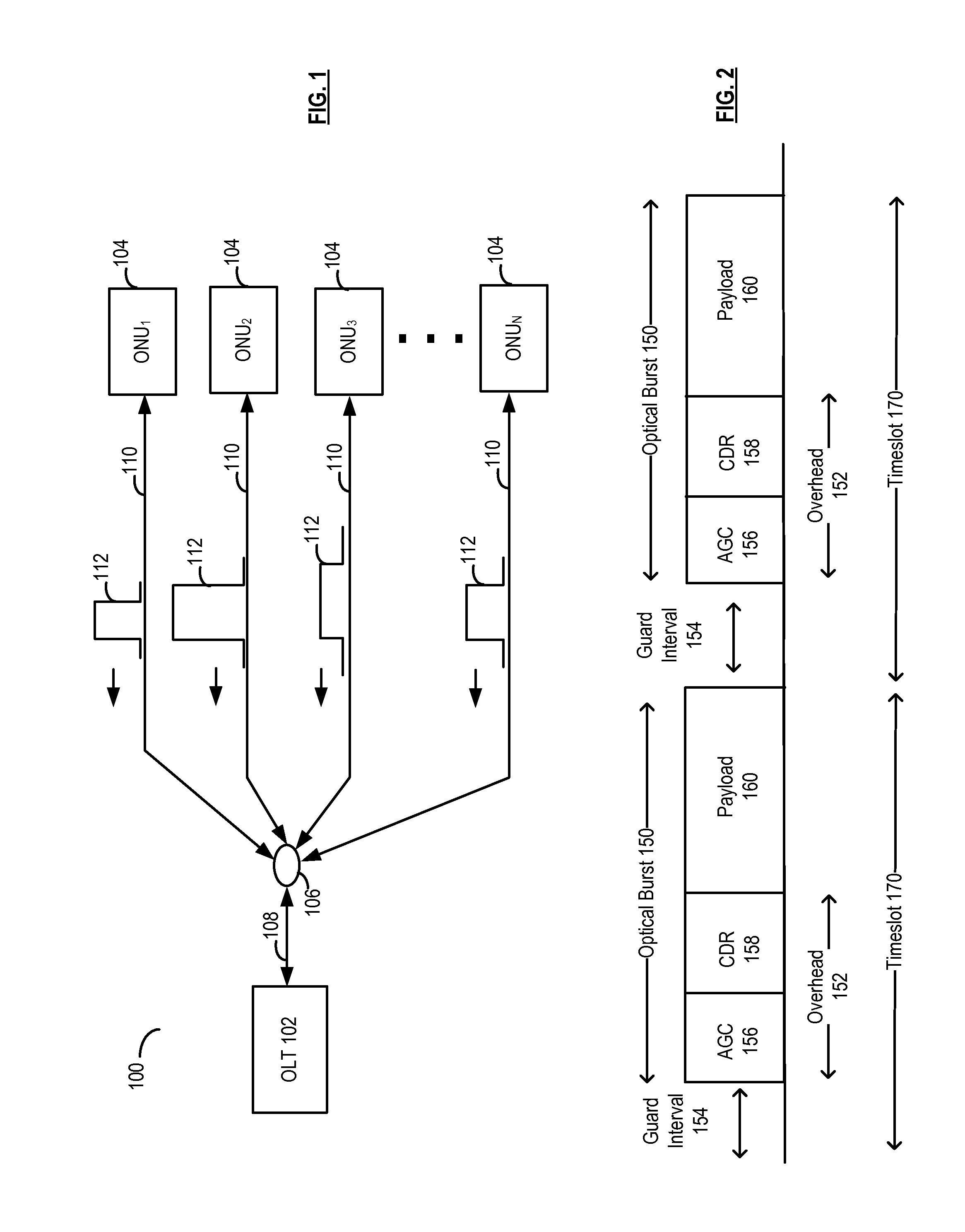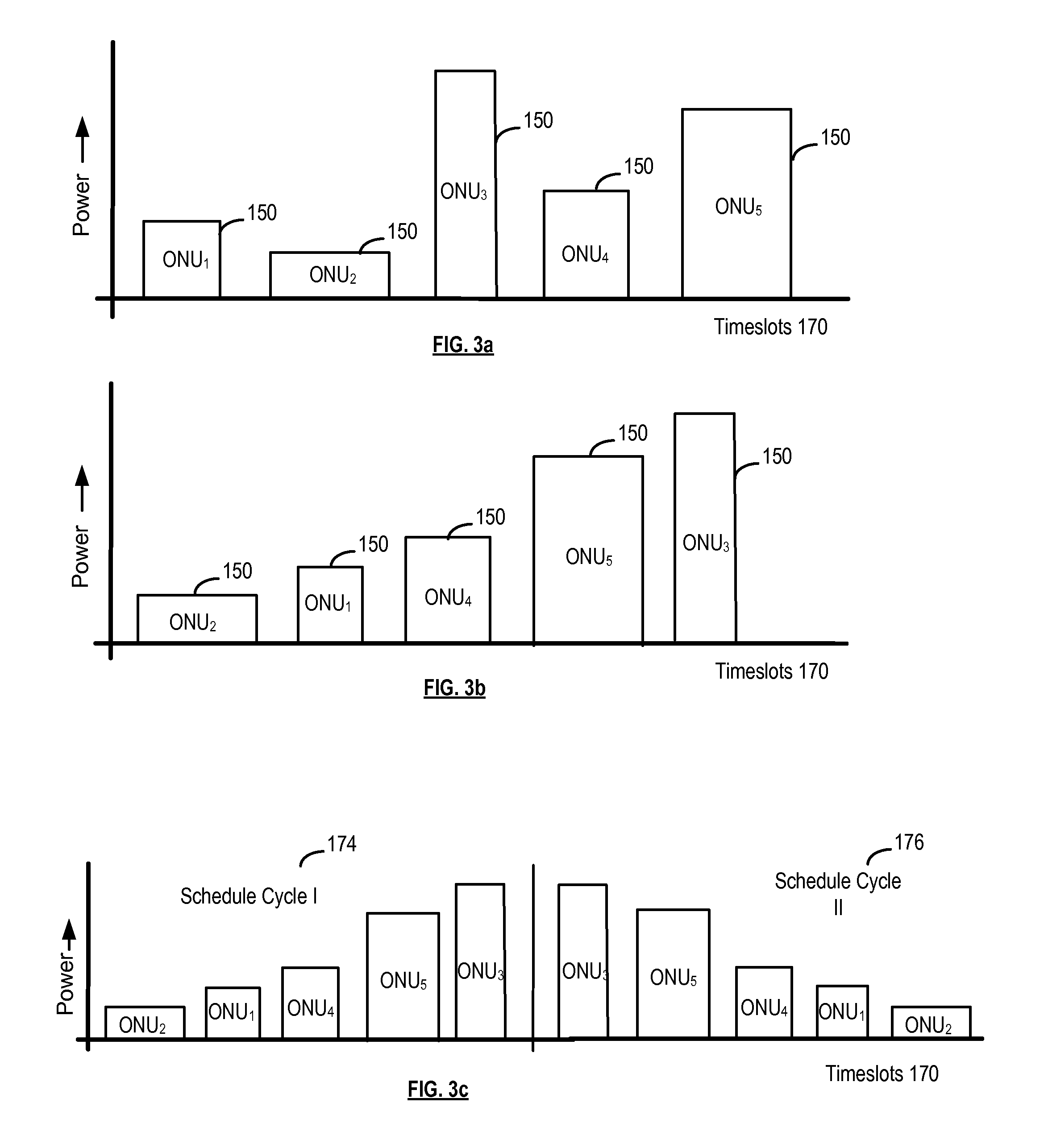System and method for scheduling timeslots for transmission by optical nodes in an optical network
a technology of optical nodes and time slots, applied in the field of optical networks, can solve problems such as optical receivers in the ol
- Summary
- Abstract
- Description
- Claims
- Application Information
AI Technical Summary
Benefits of technology
Problems solved by technology
Method used
Image
Examples
Embodiment Construction
[0021]FIG. 1 illustrates a schematic block diagram of an embodiment of a passive optical network (PON) 100. The PON 100 includes an optical line termination module (OLT) 102 and a plurality of optical network units (ONUs) 104. The OLT 102 is coupled to an optical coupler module 106 by an optical link 108. The optical coupler module 106 splits the optical link 108 into 1×N access links 110. In an embodiment, the optical coupler includes a passive beam splitter / coupler or one or more cascaded beam splitters / couplers.
[0022]In general, the OLT 102 is located at a central office or network provider and couples the PON 100 to a metro network or wide area network, such as a broadcasting network, Internet, or time division multiplexed (TDM) network. In an embodiment, an internet service provider or local exchange carrier or other service provider provides broadband communication services to network users over the PON 100, such as voice, video and data services. The PON 100 can implement a s...
PUM
 Login to View More
Login to View More Abstract
Description
Claims
Application Information
 Login to View More
Login to View More - R&D
- Intellectual Property
- Life Sciences
- Materials
- Tech Scout
- Unparalleled Data Quality
- Higher Quality Content
- 60% Fewer Hallucinations
Browse by: Latest US Patents, China's latest patents, Technical Efficacy Thesaurus, Application Domain, Technology Topic, Popular Technical Reports.
© 2025 PatSnap. All rights reserved.Legal|Privacy policy|Modern Slavery Act Transparency Statement|Sitemap|About US| Contact US: help@patsnap.com



